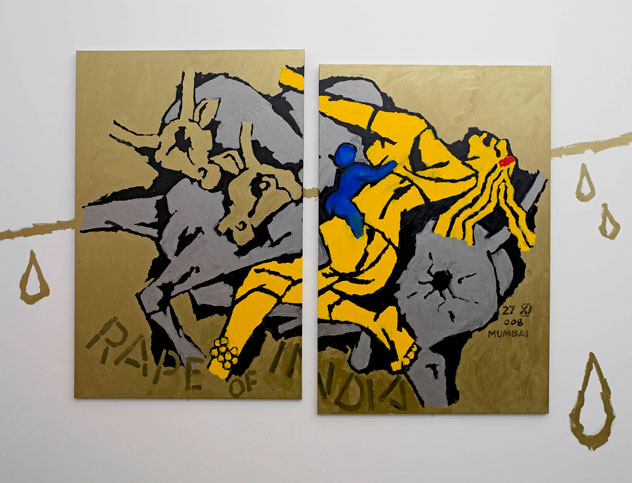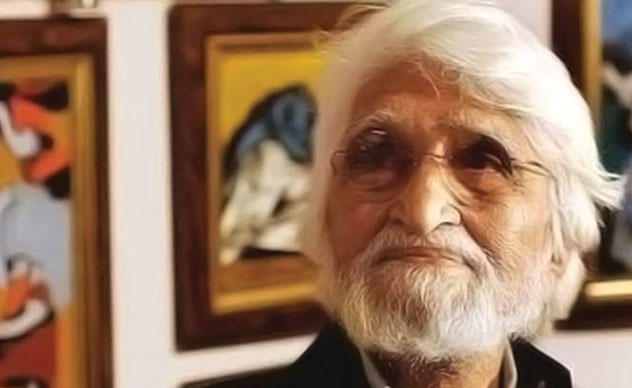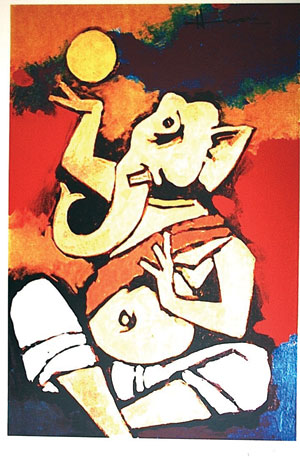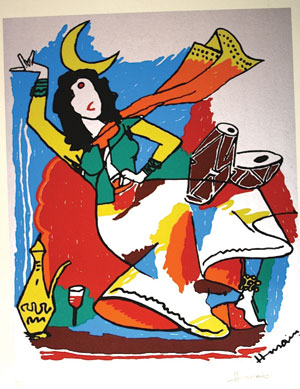|
|
|
ADVERTISEMENTS
|
|
PREMIUM
- HAPPY HOLIDAYS!
- Siliconeer Mobile App - Download Now
- Siliconeer - Multimedia Magazine - email-Subscription
- Avex Funding: Home Loans
- Comcast Xfinity Triple Play Voice - Internet - TV
- AKSHAY PATRA - Bay Area Event - Sat. Dec 6
- Calcoast Mortgage - Home Loans
- New Homes in Silicon Valley: City Ventures - Loden Place - Morgan Hill
- Bombay to Goa Restaurant, Sunnyvale
- Buying, Sellling Real Estate in Fremont, SF Bay Area, CA - Happy Living 4U - Realtor Ashok K. Gupta & Vijay Shah
- Sunnyvale Hindu Temple: December Events
- ARYA Global Cuisine, Cupertino - New Year's Eve Party - Belly Dancing and more
- Bhindi Jewellers - ROLEX
- Dadi Pariwar USA Foundation - Chappan Bhog - Sunnyvale Temple - Nov 16, 2014 - 1 PM
- India Chaat Cuisine, Sunnyvale
- Matrix Insurance Agency: Obamacare - New Healthcare Insurance Policies, Visitors Insurance and more
- New India Bazar: Groceries: Special Sale
- The Chugh Firm - Attorneys and CPAs
- California Temple Schedules
- Christ Church of India - Mela - Bharath to the Bay
- Taste of India - Fremont
- MILAN Indian Cuisine & Milan Sweet Center, Milpitas
- Shiva's Restaurant, Mountain View
- Indian Holiday Options: Vacation in India
- Sakoon Restaurant, Mountain View
- Bombay Garden Restaurants, SF Bay Area
- Law Offices of Mahesh Bajoria - Labor Law
- Sri Venkatesh Bhavan - Pleasanton - South Indian Food
- Alam Accountancy Corporation - Business & Tax Services
- Chaat Paradise, Mountain View & Fremont
- Chaat House, Fremont & Sunnyvale
- Balaji Temple - December Events
- God's Love
- Kids Castle, Newark Fremont: NEW COUPONS
- Pani Puri Company, Santa Clara
- Pandit Parashar (Astrologer)
- Acharya Krishna Kumar Pandey
- Astrologer Mahendra Swamy
- Raj Palace, San Jose: Six Dollars - 10 Samosas
CLASSIFIEDS
MULTIMEDIA VIDEO
|
|
|
|
|
REMEMBRANCE:
A Life Time of Painting: M.F. Husian (1915-2011)
He may be loved by some, hated by others, but whatever the taste, M.F. Husain was arguably the most charismatic painter of his time. His loss will be greatly felt in the Indian art fraternity, writes Priyanka Bhardwaj.

(Above): M.F. Husain - Rape of India 2008
Acrylic on canvas. Overall dimensions 182.8 x 121.9 cm. Courtesy the artist
© 2008 M.F. Husain. Installation view: Indian Highway, Serpentine Gallery, 10 December 2008 – 22 February 2009. [Photo: SerpentineGallery.com | Sylvain Deleu]
(Below, right): File photo of M.F. Husain
 The journey of a tall, strikingly handsome, dynamic, versatile, impeccably dressed, carrying an extra long paint brush, barefoot and globally celebrated painter Maqbool Fida Husain that started on September 17, 1915 during the reign of the British Raj and came to rest on June 9, 2011. The journey of a tall, strikingly handsome, dynamic, versatile, impeccably dressed, carrying an extra long paint brush, barefoot and globally celebrated painter Maqbool Fida Husain that started on September 17, 1915 during the reign of the British Raj and came to rest on June 9, 2011.
Evidently in these 95 years a whole generation of influences bore an indelible imprint on the life and creative expressions of this immensely talented man.
Echoing his romance with the brush and paint a young Husain once told his father that his brush would continue to paint even if to white wash the walls of people.
Influences of European modernists like Cézanne and Matisse and modified Cubist style along with borrowings of Hindu mythology and epics like Ramayana and Mahabharata are evident in his work that is serious and funny and also sarcastic at times.
His themes touched an ordinary life, one of the working class and also there was this unquenchable thirst to `his mother’ in the female form. Maqbool had no memories of his mother, whom he lost as a three-year-old child and that was why he would never detail the faces of female forms in his work.
As one who was constantly defined against a Western standard, ‘Picasso of India,’ Husain always implored, “My heart remains in India and ‘99 per cent’ Indians love me. For me, India means a celebration of life. You cannot find that same quality anywhere in the world. I never wanted to be clever, esoteric and abstract. I wanted to make simple statements. I wanted my canvasses to have a story. I wanted my art to talk to people.”
Also there was much more to savor about him as he unabashedly explored every realm of art domain with immense aplomb – painting, filmmaking, printmaking, photography, etc.
His brush colored 60,000 canvasses in a lifetime, a self confession in one of his last interviews to BBC, waiting for no moment of inspiration or mood and earning the highest bidding that any Indian painting had ever fetched.
His USP was not just his art but also his ever evolving self-marketing that catapulted his paintings to gross the highest bid ever received on any Indian painting.
 (Right): M.F. Husain's portrait of Ganesha (Right): M.F. Husain's portrait of Ganesha
Interestingly Husain was a self taught artist starting his tryst with the world of painting as a bill board artist in Bombay for a pittance, four to six annas per square foot, and the first somewhat taste of recognition or fame could arrive at not so young age of 40.
India’s freedom in 1947 saw his growing affiliations with the Indian Progressive Artists’ Group that broke with nationalist traditions of Bengal School of Art toward an Indian avant-garde.
Not one to remain in any confines he broke geographical barriers and traveled extensively to Europe and the US in 1950s and held his first solo exhibition at Zürich in 1952.
1955, 1973 and 1991 were significant years as the Indian government recognized his talent with prestigious national awards: Padma Shri, Padma Bhushan and Padma Vibhusan awards respectively.
Twelve years later his creativity painted a new facet as his first film, Through the Eyes of a Painter established his mark at Berlin Film Festival and won him the coveted ‘Golden Bear.’
Slowly rising toward more and more fame he even gained acceptance and membership to the coveted Rajya Sabha, upper house of Indian Parliament.
Bollywood remained an important element in his moving on to new horizons of art.
The female lead of Hum Apke Hain Kaun, Madhuri Dixit, stirred his senses and out came his series called ‘Fida’ where Ms. Dixit became his painting muse and soon after the subject of his movie venture, Gaja Gamini that revolved around the essence of womanhood.
His line of films included Meenaxi: A Tale of Three Cities and there were more divas to capture his fancy: Amrita Rao and Anushka Sharma.
The world of Indian art rocked as in early 2008, his ‘Battle of Ganga and Jamuna: Mahabharata 12’, a large diptych, fetched a whopping $1.6 million.
It was a world record at Christie’s South Asian Modern and Contemporary Art sale.
Lately three of his paintings topped a Bonham’s auction, selling for Rs. 0.0232 billion and an untitled oil work depicting horse and woman fetching Rs. 0.0123 billion.
History will remain indebted to this artist who brilliantly chronicled and illustrated contemporary India whether it be fury of a cyclone, politician Indira Gandhi as ‘Durga riding a tiger’, celebration of a centuries of a cricketer, a singing Bhimsen Joshi, Bollywood divas like Madhuri Dixit in his ‘Fida’ series, Mother Teresa, etc.
Ram Rahman, photographer, art activist and close friend of Husain, said, “Husain made the idea of a contemporary artist real in India - an artist as a wandering free spirit, but he also made the market.”
It was in early 1990s when the national political environment was communally vicious that partisan Hindu groups found in Husain a vulnerable and soft target for his nude paintings of Indian goddesses from 1970s.
These paintings were juxtaposed with fully clad depictions of Muslim women to prove a point of ‘denigration of Hindu religion.’
He, his home and many art galleries displaying his work became targets of violent attacks by political and religious zealots who filed numerous cases against him in local courts.
In Husain’s support Rahman says, “He was never a radical artist, not attempting to shock anyone. He was not trying to go against traditional iconography, rather he followed traditional iconography, Traditional sculptures of Indian goddess, even in temples, are bare-breasted. There are numerous depictions of the goddess Kali in the nude. For Muslim depictions, there is no tradition of nudes. Husain simply followed the existing iconography.”
Husain had himself gone on record to say: “In Calcutta … all these goddesses, there are thousands of them already there. I wanted to communicate. I thought my metaphor, my images should connect with the greatest Mahabharata and Ramayana, which is the folklore of the country.”
Even his film: Meenaxi: A Tale of Three Cities had to be withdrawn from theatres when it drew the ire of Muslim organizations.
Yet, his celebration of life till the end came out best in his life that was based on breaking every confine of religion, color, caste and creed and his evocation of ‘Mother India’ as a nude woman in the shape of India’s map for a media publication, India Today.
 (Right): M.F. Husain's portrait of a dancing woman (Right): M.F. Husain's portrait of a dancing woman
This was in 2006 and ensuing attacks and protests by Hindu organizations and a litany of legal cases forced Husain to seek exile and citizenship of Qatar.
Working between Qatar and Britain, he breathed his last in Royal Brampton Hospital, London and in accordance to his wishes was buried in the country he died.
His demise at a ripe old age of 95 struck India, members of the Indian art community with a shock and the Government of India that is trying fervently to bring his remains back to the soil of his birth.
The surrealist that he was Husain drew and painted prolifically for newspapers and favorite restaurants, small cafes and his last projects included designing of store of a shoe maker friend in Mumbai’s Five Star Hotel, Indian civilization, Islamic and Arab Civilization and history of Bollywood.
His talents, accomplishments and persona shaped popular culture and mainstream national imagination in complex ways and extracted reactions that shook the set foundations of Indian ethos from a delirium.
His passion and all consuming fervor ran through his avatars and extracted diverse emotions of love and hate in equal measure.
His actions, both in the world of art and outside of it, were surrounded by the environment of incomprehension that lay bare the hollowness of democracy and rights to freedom as they are practiced.
Occupying an invaluable space on the canvass of the world of painting, grabbing international respect for Indian art for the first time in history, pushing every known boundary of art and exhibitionism of art and forcing people to question Indian notions and state of democracy were some hallmarks of his life.
For thousands of years Husain’s brush and details of each piece of painting will continue to lend color and hue to Indian art and form.
And henceforth Indian art will aptly be chronicled as ‘before’ and ‘after MF Husain.’
|
 Priyanka Bhardwaj is a reporter with Siliconeer. She is based in New Delhi. Priyanka Bhardwaj is a reporter with Siliconeer. She is based in New Delhi.
|
|
|
|
|
|